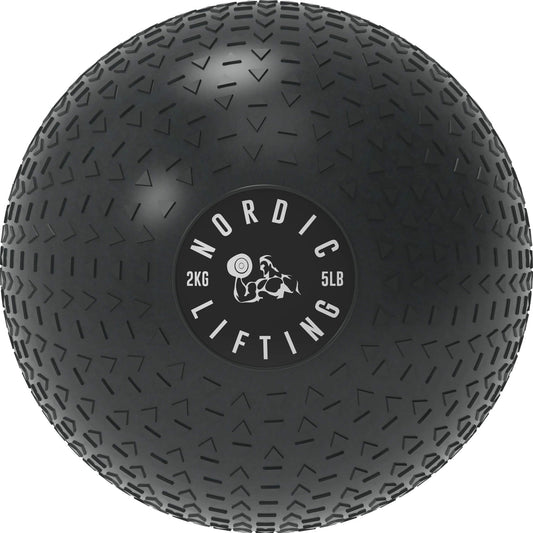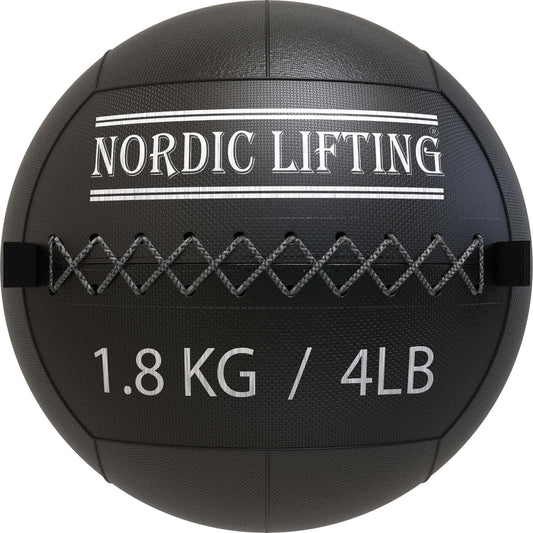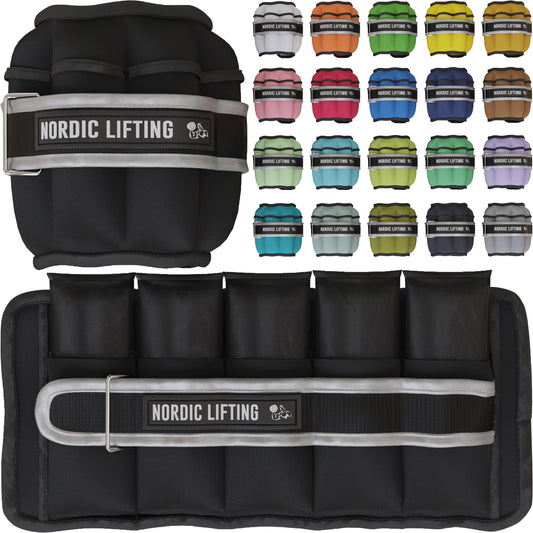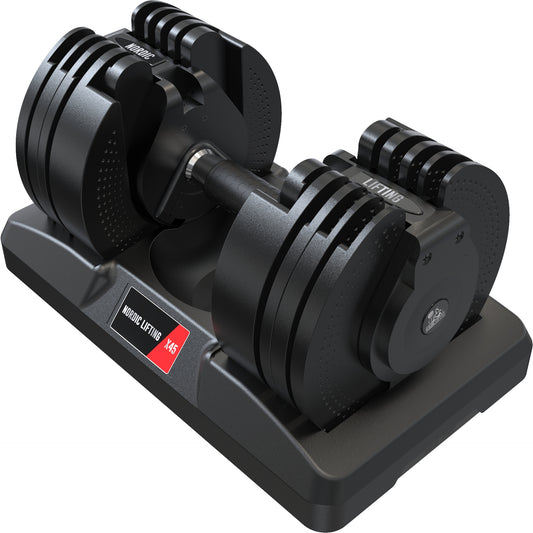Last Update: April 21, 2025
Setting up a home gym can save time, money, and make it easier to stick to fitness goals. The best way to build a home gym is to pick the right space, choose key equipment, and match the setup to personal fitness needs. With careful planning and a few budget-friendly choices, anyone can create a gym that fits their lifestyle and space.
A successful home gym starts by considering things like available room, flooring, and comfort. Picking multi-use equipment like dumbbells, resistance bands, or adjustable benches lets people get the most out of small spaces. Learning from others’ setups and expert tips, such as those found in guides for budget home gym setups, can help avoid common mistakes.
Key Takeaways
- Identify a good space and plan around your fitness needs.
- Invest in a few essential pieces of equipment to start.
- Adjust your gym layout and gear as your goals change.
Choosing the Right Space for Your Home Gym
Selecting the ideal space is key for a functional and comfortable home gym. A well-chosen area helps the gym setup fit into daily routines and supports long-term fitness goals.
Assessing Space and Layout
The amount of space needed depends on the equipment and the types of workouts. Compact setups like yoga, stretching, or using free weights often require as little as 20-50 square feet. Larger machines, such as treadmills or power racks, work better with 50-200 square feet. A full home gym might need up to 400 square feet, about the size of a single-car garage, for multiple stations and open movement areas.
To create an efficient layout, measure the room and plan clear pathways around equipment. Place larger machines against walls to save space. Check ceiling height if using overhead bars or jump ropes. Avoid overcrowding to ensure safe movement.
For step-by-step sizing recommendations, see this guide on creating a home gym for any room size.
Optimizing Lighting and Ventilation
Good lighting makes the space safer and keeps workouts enjoyable. Natural light is best, so a room with windows is a great choice. If natural light is limited, use bright LED fixtures that evenly light the entire area. Avoid dark corners that could hide hazards.
Proper ventilation keeps air fresh and reduces odors. Ideally, set up near windows or a door that can open for airflow. In rooms without windows, install a fan or a portable air purifier. A ceiling fan can also help circulate air and maintain a comfortable temperature during exercise.
Soundproofing and Flooring Options
Soundproofing helps make a home gym quieter and more private. Thick curtains, wall panels, or foam mats can reduce noise, especially in shared living spaces. Placing soft materials on the walls helps block sound from machines or weights being dropped.
Flooring is important for safety and protecting floors. Rubber mats or foam tiles cushion joints during exercise and keep equipment from sliding. They also help absorb noise. For strength training, thicker rubber mats add extra shock absorption and prevent floor damage. Easy-to-clean options make maintenance simple and help keep the gym setup looking new.
Defining Your Fitness Goals
A home gym is most effective when tailored to personal needs. Choosing the right plan starts with knowing what is important and how to measure progress.
Identifying Training Priorities
Setting clear fitness goals is the first step in building a home gym. Goals often fall into categories like strength training, weight loss, flexibility, or general wellness. For example, someone wanting to lose weight may focus on cardio equipment and lighter weights, while another person who wants to gain strength can invest in heavier dumbbells or a barbell set.
A simple way to start is to ask, “What do I want to achieve?” Writing down specific, realistic goals makes it easier to stay focused. Use a table or bullet list to keep priorities organized. Here is an example:
| Goal | Equipment | Frequency |
|---|---|---|
| Lose weight | Treadmill, bands | 3-5 days a week |
| Gain strength | Barbell, bench | 3 days a week |
| Improve mobility | Mat, stretch band | 4-6 days a week |
Fitness goals help shape equipment choices and workout plans. For more ideas, see these tips for defining goals and space.
Tracking Progress with Technology
Technology can make it easier to stick to goals and see results. Many people use devices like an Apple Watch or other fitness trackers. These tools can monitor heart rate, track steps, and log workout sessions automatically.
Apps often give reminders to move or send progress alerts. They store workout data, making it easier to notice trends or changes over time. Most trackers easily sync with smartphones, so all information is in one place.
Setting goals within an app, such as “walk 10,000 steps a day” or “work out 30 minutes,” can help build healthy habits. Devices like the Apple Watch show graphs of activity, making success easier to see and share. Many apps also allow users to compare weekly or monthly stats, which can increase motivation.
Choosing Home Gym Equipment Essentials
Picking the right equipment makes home workouts safe, effective, and organized. A smart mix of gear supports strength, cardio, and flexibility while helping save space. Simple storage ideas keep the area clean and easy to use.
Core Equipment Selection
Starting a home gym can be simple with a few core items. Many people use an exercise mat, resistance bands, and a sturdy bench. These help with a wide range of activities, from stretches to weight routines.
Adjustable dumbbells are especially useful in small spaces. They offer different weights in a compact design, making them a favorite for those with limited room. Kettlebells, jump ropes, and a pull-up bar add even more training options.
Portable equipment lets users take their workout anywhere in the house. For those interested in bodyweight exercises, a set of push-up handles or gymnastics rings can increase workout variety. Begin with these basics for a flexible, balanced setup. An example of this approach can be seen at BodyKore’s gym equipment selection guide.
Equipment for Strength Training
Strength training is important for muscle growth and injury prevention. People often start with dumbbells because they work for many exercises. For more variety, barbells and weight plates give more weight options and are needed for exercises like squats or deadlifts.
Selectorized dumbbells or adjustable systems, such as Powerblocks or Bowflex, allow very fast changes in weight. This saves time during workouts and reduces clutter, as fewer separate weights are needed. Some also choose resistance bands to add challenge without taking up much space.
A good bench should have adjustable settings for common movements like bench presses, step-ups, or seated curls. Wall-mounted racks or compact squat stands can hold weights safely. Safety features, such as collars for barbells, help avoid accidents. More on useful strength options for the home gym is covered in the Garage Gym Reviews overview.
Cardio Machines and Alternatives
Cardio equipment does not need to take up much space. Treadmills, stationary bikes, and rowing machines are popular for steady workouts, but some users have limited space or budgets. When space is a concern, jump ropes or compact steppers are practical alternatives.
For walkers or runners, look for a treadmill with a long enough running surface. Users should consider their stride length and the machine’s maximum weight rating. Adjustable resistance on bikes or rowers offers variation for different fitness levels.
Folding designs help larger equipment fit into small rooms. Sometimes, a well-ventilated area and a simple adjustable dumbbell or kettlebell can give cardio benefits if used in circuit workouts. Heart rate monitors also help track progress during cardio sessions.
Storage Solutions for Equipment
An organized home gym is easier and safer to use. Wall-mounted shelves or pegboards keep smaller items, like resistance bands and jump ropes, off the floor. Weight trees or dumbbell racks hold heavier items in a compact way.
Storing adjustable equipment often means fewer racks, which helps save space. Use storage benches with built-in compartments for mats or rollers. Over-the-door hooks can hold yoga mats, bands, or towels.
Labeling shelves or bins helps find gear fast. To maximize room, choose foldable benches or stackable items. Keeping a dedicated storage system lowers clutter and reduces tripping hazards, making the home gym more inviting. For more storage and setup tips, explore this Reddit discussion on home gym essentials.
Designing Safe and Effective Home Workouts
A well-designed home workout improves fitness and lowers the chance of injury. With careful planning, anyone can make workouts both safe and efficient, even in tight spaces.
Creating Workout Routines
Each workout routine should match the goals and fitness level of the person exercising. A good plan usually mixes strength, cardio, and flexibility exercises throughout the week. This approach keeps the body balanced and reduces the risk of overuse injuries.
Here's a simple weekly layout:
| Day | Focus |
|---|---|
| Monday | Upper body |
| Tuesday | Cardio |
| Wednesday | Lower body |
| Thursday | Flexibility/Yoga |
| Friday | Full body |
| Saturday | Cardio |
| Sunday | Rest |
Before and after each session, they should take 5–10 minutes to warm up and cool down. This helps prevent muscle strain and makes recovery faster. It's also important to use correct form and start with lighter weights or easier moves at first.
They should listen to their bodies and rest if they feel pain. Consistency is more important than intensity for long-term results.
Adapting Workouts for Small Spaces
Not everyone has a big area for exercise, but many effective home gym setups work in small rooms. People can use bodyweight exercises, resistance bands, or simple equipment like dumbbells or yoga mats.
To save space, workouts can include:
- Push-ups, squats, lunges, and planks
- Standing cardio moves like jumping jacks or high knees
- Resistance band routines that do not need much room to stretch
Furniture can help out, too. A sturdy chair supports tricep dips or step-ups. Keeping floors clear and storing equipment on shelves or in bins can help avoid trips and falls, making the small space safer. Regularly changing the exercises keeps workouts interesting and targets different muscle groups.
Personalizing Your Home Gym Setup
A comfortable and motivating workout space can make exercise routines easier to stick with over time. Details like lighting, music, and technology all play a part in creating a unique and effective home gym.
Incorporating Motivational Elements
Many people find that motivational posters or inspiring quotes help boost their drive during exercise. Wall art with positive messages adds character and keeps users focused. Some also display progress charts or calendars to track fitness goals, which can provide a visual reminder and sense of achievement.
Using good lighting helps keep the space bright and welcoming. For extra motivation, consider a sound system or small Bluetooth speaker. Curating a playlist with high-energy songs helps set the mood and improve the whole workout experience. For more ideas about how to personalize a gym, this guide on simple ways to personalize your home gym is helpful.
Tech Upgrades and Smart Devices
Smart devices can upgrade any home gym. Many people use wearables, like the Apple Watch, to track heart rate, set timers, and monitor calories burned. Syncing these devices with mobile apps helps users set weekly goals and watch progress over time.
Adding a smart TV or tablet provides access to online classes and workout videos. Some install smart lighting that can change colors or brightness for different times of day. Even setting up smart plugs allows equipment or fans to turn on and off with voice commands or a smartphone.
A table of useful devices:
| Device | Purpose |
|---|---|
| Apple Watch | Activity tracking |
| Smart speaker | Music, voice commands |
| Smart TV/Tablet | Fitness videos, virtual classes |
| Smart lighting | Custom mood and settings |
Maintenance and Upkeep of Your Home Gym
Keeping a home gym in good shape is important to make sure all equipment works well and is safe to use. Regular cleaning helps prevent dirt buildup, while routine checks help avoid damage or injury from broken parts.
Cleaning and Organizing Equipment
Wipe down gym equipment after each session to remove sweat and dust. Use a mild cleaning solution or disinfectant wipes that are safe for workout surfaces. Certain parts, like benches, dumbbells, and handlebars, may collect grime faster and need extra care.
Vacuum or sweep the floor often to avoid dust and debris that can scratch or damage equipment over time. Store weights using racks and keep mats rolled up when not in use. Good storage options help prevent tripping and injury.
A clean and organized gym extends the life of home gym equipment and makes it easier to spot problems early. Try to schedule a deep clean, including scrubbing and vacuuming, every couple of weeks.
Safety Checks and Equipment Longevity
Check gym equipment for loose bolts, nuts, or parts at least once a month. Tighten anything that seems loose and look for cracks or signs of wear, especially on moving parts.
Use lubricant such as silicone oil on multi-gyms and machines with moving joints. This helps reduce friction and wear, keeping machines smooth and lasting longer.
Inspect cables, handles, and pulleys for fraying or damage. Replace worn parts right away to prevent accidents. Ensure that rubber grips and pads are in good shape, as damaged grips can lead to slips or reduced control.
Keep the gym area dry to stop rust on metal parts. If water or sweat spills, wipe it up quickly. Store equipment in a way that does not put too much weight or pressure on one spot to avoid bending or warping.
Budgeting for a Home Gym Setup
Building a home gym does not require spending thousands of dollars. Careful planning and smart choices can help keep costs low while meeting personal fitness needs.
Cost-Saving Strategies
To save money, people should focus on buying only the equipment they will use regularly. Many start with a few essentials, such as dumbbells, resistance bands, or a yoga mat, and add more items later as their needs grow. Shopping for used gym equipment on local marketplaces can also reduce costs.
Bundled sets often offer better value, such as adjustable dumbbells, which can replace an entire rack of fixed weights. Some of the most budget-friendly home gym setups cost as little as $300. Others may spend up to $500 for a more versatile setup that includes kettlebells, a basic bench, and shelving for organization. For more ideas, see these budget home gym setups.
Buying in stages helps prevent overspending. Waiting for sales or buying during off-seasons can lead to additional savings. Looking for simple items like towels or storage shelves at general retail stores can be cheaper than specialty fitness shops.
DIY Versus Commercial Equipment
Some people choose to build parts of their home gym themselves. For example, making a sturdy squat rack or plyo box from wood can be less expensive than buying commercial versions. DIY options require basic tools and a bit of time, but can cut costs by more than half.
Commercial gym equipment is often more durable and comes with safety features and warranties, but usually costs much more. Heavier equipment like adjustable benches or cable machines may be hard to build at home and are safer to buy new. Balance between custom DIY builds and buying essential equipment based on individual needs and skill level.
Choosing when to invest in commercial options and when to try DIY can stretch a home gym budget further. For more detailed guidance, the Fitnessista shares helpful tips about mixing equipment types for different budgets.
Expanding and Upgrading Your Home Gym Over Time
Adding new tools or specialized stations can keep workouts interesting and targeted. Modifying setups helps support different fitness goals as they change or improve.
Adding Specialty Equipment
Once the basics are set, such as a bench, a rack, and free weights, the next step is to include specialty equipment. Items like adjustable dumbbells, kettlebells, resistance bands, and medicine balls offer new ways to train.
Equipment made for specific activities, like a rowing machine or air bike, can improve cardio health. A weight sled or battle ropes give more choices for strength and endurance training. Mirrors and rubber flooring protect the space and help with proper form.
Storage racks and wall hooks keep the area organized. Upgraded lighting or ventilation makes the gym safer and more inviting. An extra sound system or digital screen can boost motivation and support fitness routines. For more setup inspiration, see these home gym design ideas.
Scaling for New Fitness Goals
As strength or endurance goals shift, it helps to adapt the home gym. For example, people aiming for heavier lifts can add plate storage, bigger barbells, or extra safety bars. Those focusing on high-intensity workouts might upgrade to more durable or specialized flooring.
Switching from muscle gain to weight loss may need a treadmill, stationary bike, or jump rope for added cardio. Adjustable benches or cable stations allow for more exercises as routines change.
Changing spaces with moveable partitions, mirrors, or new layouts makes room for new activities like stretching or yoga. A fresh set of goals can be tracked with whiteboards, timers, or apps for steady progress. For more ideas on remodeling and enlarging a home gym, consider specialized upgrades over time.
Frequently Asked Questions
Picking the right equipment, using your space wisely, and making smart budget choices can help anyone set up a home gym. There are options for every space and budget, from high-end multi-gyms to simple DIY setups that use what people already have at home.
What essential equipment do I need for a basic home gym setup?
A basic home gym usually needs a set of adjustable dumbbells, a bench, resistance bands, and a mat. A pull-up bar and stability ball are also helpful for more exercises without taking up much room.
If there is more space and budget, a barbell with weight plates and a squat rack can add more strength training options.
How can I maximize space in a small home gym area?
Choosing folding or stackable equipment is important in tight spaces. Wall-mounted racks and shelves can store weights and accessories off the floor. Resistance bands and adjustable dumbbells work well because they take up very little room.
Using mirrors can also make a room look bigger and help keep proper form during workouts. More ideas for small spaces can be found in this FAQ on building your home gym.
What are some budget-friendly ways to build a home gym?
Buying used gym equipment from online marketplaces or local classifieds can save money. People can also check for sales or buy basic gear like resistance bands, adjustable dumbbells, or kettlebells.
Some even create homemade equipment, such as filling old milk jugs with water or sand for makeshift weights. For more tips about planning by budget, see Gray Matter Lifting’s FAQ.
What are the top 10 must-haves for a comprehensive home gym?
- Adjustable dumbbells
- Barbell and weight plates
- Squat or power rack
- Weight bench
- Pull-up bar
- Resistance bands
- Kettlebells
- Yoga or exercise mat
- Stability ball
- Storage racks or shelves
This list covers both strength and flexibility needs and helps keep the gym safe and organized.
How do I create a functional home gym if I have no money to spend?
People can use bodyweight exercises like push-ups, squats, sit-ups, and planks. Using steps, sturdy chairs, or backpack loaded with books can add difficulty. Creative solutions like using towels for sliders or making homemade resistance bands from old tights can also work.
Clear a small area in a living room or bedroom to use as a dedicated space, keeping it tidy for easy access.
What are the best all-in-one home gym systems currently on the market?
Popular all-in-one systems include models from Bowflex, Total Gym, and NordicTrack. These offer a variety of weight and cable machines that cover many exercises in one compact unit.
Some racks now blend free weights, pulleys, and storage, making them a good fit for multi-purpose rooms. Buyers should compare features, size, and warranty before choosing an all-in-one home gym system.














